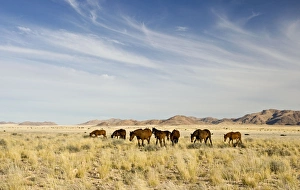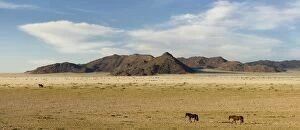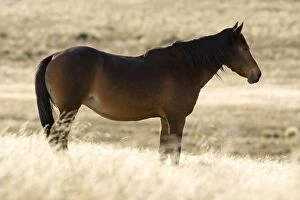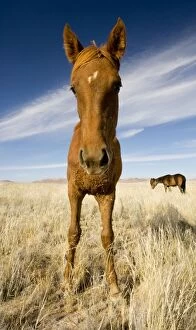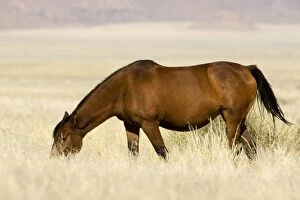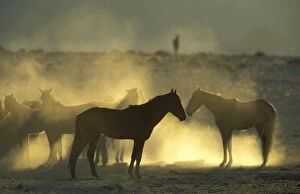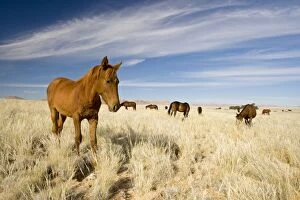Namib Wild Horse Collection
The Namib wild horses, feral descendants of horses left behind by German troops in the early 1900s
All Professionally Made to Order for Quick Shipping
The Namib wild horses, feral descendants of horses left behind by German troops in the early 1900s, roam freely through the vast and arid landscape of the Garub plains in the Namib Desert, Africa. These magnificent creatures have adapted to their harsh desert environment and are a sight to behold. In one captivating image, a group of wild desert horses can be seen on the move after good rains. Their hooves kick up dust as they traverse the sandy terrain with grace and determination. The backdrop of endless dunes adds to their mystique. Another photograph captures a backlit portrait of a solitary horse against the golden hues of sunset. The soft light illuminates its features, showcasing its untamed beauty and resilience. A wide-angle portrait showcases these majestic creatures in all their glory. With ears pricked forward and eyes alert, they exude an air of confidence amidst their barren surroundings. One striking image depicts a horse grazing peacefully on grass that has managed to sprout after rainfall, and is a testament to their ability to find sustenance even in such unforgiving conditions. A heartwarming moment is captured when a foal is portrayed alongside its mother. This tender bond between parent and offspring highlights the strength and unity within this wild horse community. Despite enduring bitterly cold winter mornings, these resilient animals continue to thrive against all odds. They stand tall as symbols of endurance and survival in one of Earth's harshest environments. Finally, two stallions engage in an intense battle for dominance over their herd's territory. Their powerful bodies clash amidst swirling dust clouds - a display both awe-inspiring and primal. The Namib wild horses embody freedom, adaptability, and tenacity like no other creature on Earth. They serve as living reminders that life finds ways even where it seems impossible - leaving us humbled by nature's wonders at every turn.

